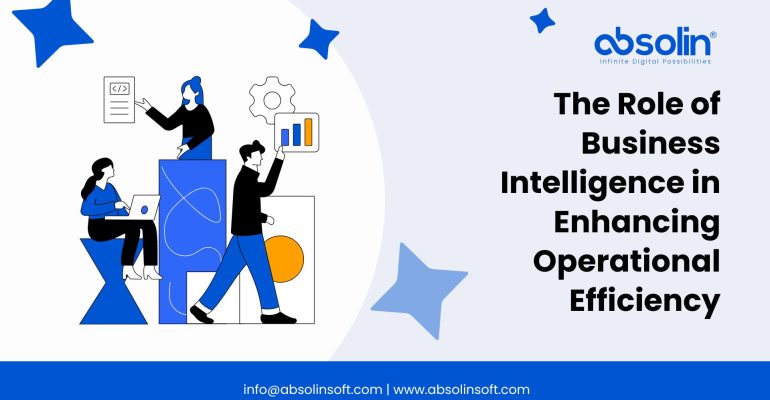The Role of Business Intelligence in Enhancing Operational Efficiency
In today’s fast-paced, data-driven world, businesses face the constant challenge of staying competitive while optimizing their resources. Enter Business Intelligence (BI)—a transformative approach that turns raw data into actionable insights, revolutionizing how organizations operate. From streamlining workflows to reducing costs and boosting productivity, BI has become a cornerstone of operational efficiency. But what exactly is BI, and how does it deliver such impactful results? Let’s dive into its role and explore why it’s a game-changer for modern enterprises.
What is Business Intelligence?
Business Intelligence refers to the technologies, tools, and strategies organizations use to collect, analyze, and interpret data, transforming it into meaningful information. BI encompasses data visualization, reporting, dashboards, predictive analytics, and more—all designed to empower decision-makers with real-time, evidence-based insights. Unlike traditional methods that relied on gut instinct or fragmented data, BI provides a holistic view of operations, enabling businesses to act smarter and faster.
At its core, BI bridges the gap between data overload and operational clarity, making it an indispensable ally for enhancing efficiency.
Streamlining Operations with Data-Driven Decisions
One of BI’s primary contributions to operational efficiency is its ability to replace guesswork with precision. Imagine a manufacturing firm struggling with supply chain delays. Without BI, managers might manually sift through spreadsheets or rely on outdated reports, wasting time and risking errors. With BI tools, they can access real-time data on inventory levels, supplier performance, and production timelines—pinpointing bottlenecks instantly.
For example, dashboards can highlight which production line is underperforming or where raw materials are stuck, allowing teams to act proactively. This reduces downtime, minimizes waste, and ensures resources are allocated where they’re needed most. The result? A leaner, more agile operation.
Enhancing Resource Management
Operational efficiency hinges on using resources—time, money, and manpower—effectively. BI shines here by identifying inefficiencies that might otherwise go unnoticed. Retailers, for instance, can use BI to analyze sales trends, customer preferences, and stock levels. If a product is overstocked in one region but selling out in another, BI flags this imbalance, enabling swift inventory redistribution.
Moreover, BI’s predictive analytics can forecast demand, helping businesses avoid overproduction or stockouts. A 2023 study by Deloitte found that companies leveraging predictive BI reduced inventory costs by up to 15% while improving delivery times—proof of its resource-optimization prowess.
Boosting Employee Productivity
Efficiency isn’t just about machines or processes; it’s about people too. BI empowers employees by giving them the tools to work smarter, not harder. Take a sales team: BI can analyze historical data to reveal which leads are most likely to convert, letting reps focus their efforts on high-value prospects instead of chasing dead ends.
Similarly, HR departments use BI to monitor workforce performance, identify skill gaps, and optimize schedules. By aligning talent with tasks more effectively, businesses reduce idle time and burnout, fostering a more productive environment. A real-world example comes from Amazon, which uses BI to fine-tune warehouse staffing, ensuring peak efficiency during high-demand periods like Black Friday.
Reducing Costs and Mitigating Risks
Every inefficiency carries a cost—whether it’s wasted materials, missed deadlines, or lost opportunities. BI tackles this head-on by uncovering hidden savings. Energy companies, for instance, use BI to monitor equipment performance, predicting maintenance needs before breakdowns occur. This shift from reactive to preventive maintenance can slash repair costs by 20-30%, according to McKinsey.
Risk management also gets a boost. BI tools can detect anomalies—like unusual financial transactions or supply chain disruptions—alerting teams to potential issues before they escalate. In industries like finance or healthcare, where compliance and accuracy are non-negotiable, this capability is invaluable.
Fostering Collaboration Across Departments
Silos are the enemy of efficiency. When departments operate in isolation, miscommunication and duplicated efforts abound. BI breaks down these barriers by providing a unified data platform accessible to all. Marketing can align campaigns with sales forecasts, while operations can sync with finance to manage budgets—all based on the same reliable insights.
Consider a global retailer: BI enables its logistics, procurement, and customer service teams to share data on shipping delays or product returns. This collaboration ensures problems are solved collectively, not passed around like a hot potato, saving time and improving customer satisfaction.
Real-World Success Stories
The impact of BI isn’t theoretical—it’s proven. Take Walmart, a pioneer in BI adoption. By analyzing point-of-sale data, weather patterns, and social media trends, Walmart optimizes its supply chain to stock stores with exactly what customers need, when they need it. This efficiency has helped the retail giant save billions while maintaining razor-thin margins.
Similarly, Southwest Airlines uses BI to analyze flight schedules, fuel consumption, and passenger demand, reducing turnaround times and keeping costs low in a cutthroat industry. These examples underscore how BI turns data into a strategic asset, driving measurable gains.
Challenges and the Path Forward
Of course, BI isn’t a magic bullet. Implementing it requires investment in technology, training, and a data-driven culture. Small businesses, in particular, might struggle with the upfront costs or lack of expertise. Data quality is another hurdle—garbage in, garbage out, as the saying goes. But as BI tools become more user-friendly and affordable (think cloud-based solutions like Tableau or Power BI), these barriers are shrinking.
Looking ahead, the integration of AI and machine learning with BI promises even greater efficiency. Imagine systems that not only analyze data but also recommend actions—like rerouting shipments or adjusting pricing in real time. The future of operational efficiency is bright, and BI is leading the charge.
Conclusion
Business Intelligence is more than a tool; it’s a mindset that empowers organizations to operate at peak performance. By delivering clarity from chaos, optimizing resources, and fostering collaboration, BI transforms inefficiencies into opportunities. Whether you’re a small startup or a global conglomerate, embracing BI can mean the difference between surviving and thriving in today’s competitive landscape.






